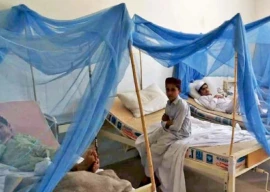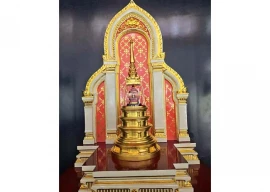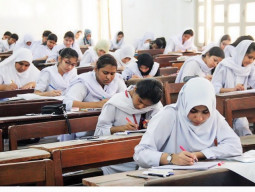
PESHAWAR:
Floods in Chitral not only swept away whatever little it boasted of infrastructure, they also washed away the elaborate Monsoon Contingency Plan that was in place. Is nature’s wrath mere eyewash or are we actually faced with phenomena that come without warning?
Initial assessment reveals ‘fluctuations’ in weather patterns but nothing was not anticipated. The Provincial Disaster Management Authority and the district’s disaster management unit have identified two main triggers – orographic rains and cloudbursts that caused glacial lake outburst floods (GLOF). Orographic rains occur when masses of air pushed by wind are forced up the side of mountains. GLOF occur when either a dam containing a glacial lake fails or a water body overflows a surrounding glacier. These usually cause floods downstream.
While it is being claimed that a massive humanitarian crisis has been averted, the magnitude of destruction has clearly been undermined.
Rising tide
Chitral Valley comprises as many as 542 glaciers that feed 187 glacial lakes. The Himalaya, Karakoram and Hindukush (HKH) mountain ranges are home to the largest glaciers in the world outside the Polar Regions. These glaciers are receding at a rate of almost 40-60 metres per decade, causing a steady increase in the water level in the glacial lakes.
According to the Intergovernmental Panel on Climatic Change’s fourth assessment report, eleven of the last twelve years (1995–2006) rank among the 12 warmest years in since 1850. What is even more alarming is that various studies suggest the warming trend in the HKH region has been greater than the global average. Hamid Ahmad Mir is affiliated with the UNDP’s GLOF project that monitors the melting of glaciers in Chitral. He said the district’s has shown “strange oscillations” in the last decade.
Mir said the GLOFs first emerged in the 80s but they have almost doubled since then. Between 2000 and 2010, there were almost seven incidents of GLOF. The trend saw a massive boost 2010 onwards; six GLOFs occurred within the next three years. Authorities believe six such incidents have led to the current crisis in Chitral.
Fume-belching
Even at the local level, human contribution towards the creeping disaster is also quite evident. Mir says since 2000, the number of non-custom paid vehicles in the district has increased by around 500%. Most of these come from Afghanistan as Malakand Division has a special tax-exempt status.
“Without much circulation at this high altitude, air pollution caused by these vehicles has turned the glacier tops black.” Mir said the black absorbs radiation, adding to the melting process. According to a government report, the average temperature in Chitral was 40.8° Celcius. Experts cite deforestation as a major contributor to this abnormal weather change.
Waiting to happen
A government official requesting anonymity said hardly any risk or environment assessment was carried out before current construction projects were started. Referring to a Golain Valley hydropower project that was also washed away by the floods, he said the project was being constructed at the foot of 26 glaciers. “It was a disaster waiting to happen,” he said. While a population of an estimated five million people remains affected by the floods, the changing climate is ringing alarms not only for Chitral but the global community too. Experts say there needs to be more agreement than politics; agreements that bind both the public and government alike. For now, the monsoon is not over.
Published in The Express Tribune, July 24th, 2015.
















































COMMENTS (5)
Comments are moderated and generally will be posted if they are on-topic and not abusive.
For more information, please see our Comments FAQ